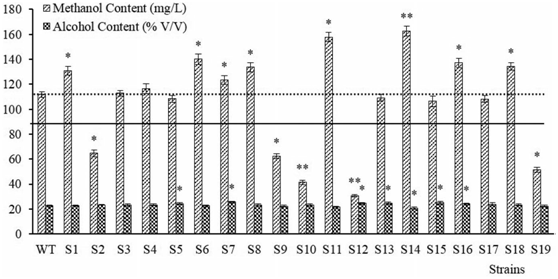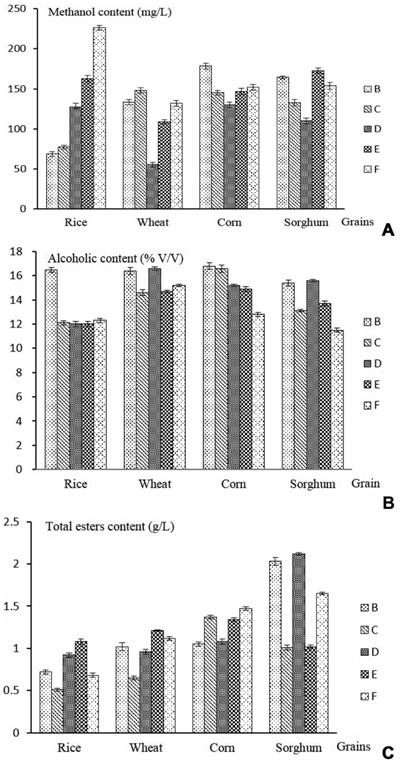——Journal of Food Science,2014,79(11):2308-2314
Ming-Hua Liang1, Ying-Jie Liang1, Jiang-Yan Chai1, Shi-Shui Zhou1, and Jian-Guo Jiang2
(1.School of Biological Science and Engineering, South China University of Technology; 2.College of Food Science and Engineering, South China University of Technology)
Abstract: Methanol, often generated in brewed wine, is highly toxic for human health. To decrease the methanol content of the brewed wine, atmospheric and room- temperature plasma (ARTP) was used as a new mutagenesis tool to generate a mutant of Saccharomy cescerevisiae with lower methanol content. Headspace gas chromatography was used to determine the identity and concentration of methanol with butyl acetate as internal standard in brewed wine.With 47.4% higher and 26.3% positive mutation rates were obtained, the ARTP jet exhibited a strong effect on mutation breeding of S. cerevisiae. The mutant S. cerevisiae S12 exhibited the lowest methanol content, which was decreased by 72.54% compared nwith that of the wild-type strain. Subsequently, the mutant S. cerevisiae S12 was used to ferment different combinations of malt and adjuncts for lower methanol content and higher alcoholic content. It was shown that the culture 6#, which was 60% malt, 20% wheat, and 20% corn, was the best combinations of malt and adjuncts, with the lowest methanol content (104.8 mg/L), and a relatively higher alcoholic content (15.3%, v/v). The optimal malt–adjunct culture 6#, treated with the glucoamylase dose of 0.04 U/mg of grain released the highest reducing sugars (201.6 mg/mL). It was indicated that the variation in reducing sugars among the combinations of malt and different adjuncts could be due to the dose of exogenous enzymes.

Figure 2–The methanol and alcohol contents in the brewed wine by fermentation of the screening strains and the WT strain. The dashed line was corresponding with the methanol content = 111.8 mg/L, which was fermented by the WT strain (control group). The solid line was corresponding with the methanol content = 89.44 mg/L, which was 20% lower than that of the WT strain. P <0.01.

Figure 3-The effects of single kind of adjunct on the yields of methanol,alcohol, and total ester. (A) The effects of single kind of adjunct on the yields of methanol.Wheat was the adjunct for lowermethanol content; P<0.01. (B) The effects of single kind of adjunct on alcoholic content. Wheat and corn were the adjuncts for higher alcoholic content; P <0.05. (C) The effects of single kind of adjunct on the yields of total esters. Sorghum and corn were the adjuncts for higher total esters; P <0.05.


 WeChat public
WeChat public 
